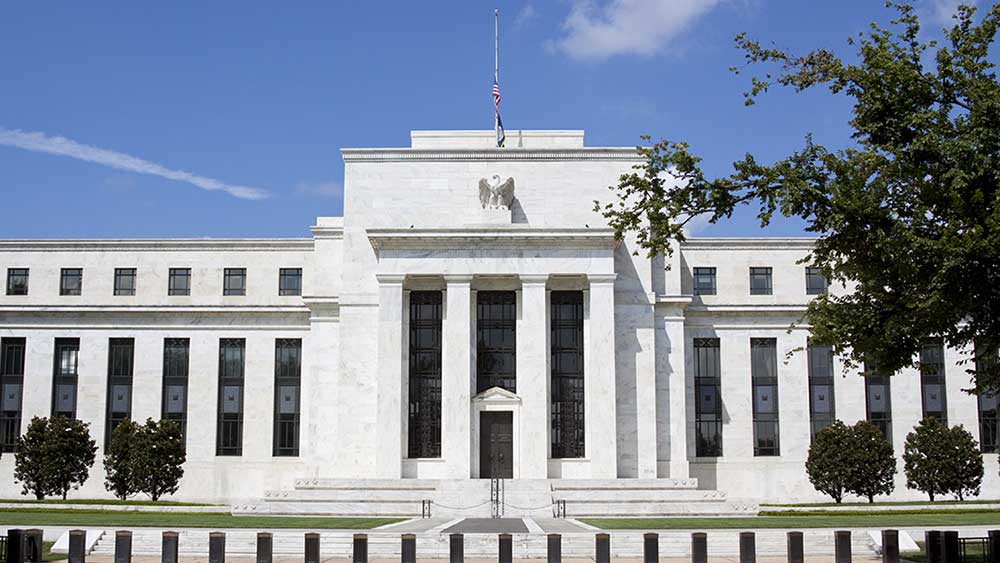The Federal Reserve has done everything it could to prepare investors for the big policy shift widely expected to be announced after today's meeting: the gradual unloading of the trillions in government bonds and mortgage securities it sopped up to support the recovery from the financial crisis.
Yet even though the $10 billion a month in maturing debt that the Fed initially plans to let run off from its balance sheet amounts to a mere trickle, the bond market may still throw another fit — a sequel to the 2013 taper tantrum, when then-Federal Reserve Chairman Ben Bernanke signaled that the Fed was likely to slow its asset purchases later in the year.
The 10-year Treasury yield already has climbed 20 basis points to 2.24% over the past two weeks, bouncing back from the lowest levels since just after President Trump's election. Below are four more developments — in addition to the change in the Fed's policy of reinvesting all maturing debt — that may lead Treasury yields to continue their resurgence over the next few months.
Advertisement
These developments — and the higher interest rates that they might bring — would likely be good news for bank stocks, which have recently snapped out of a funk. On Monday, shares of Citigroup (C) broke above a 69.96 flat-base buy point to hit its highest level since January 2009. While other investing criteria are important, a breakout is often the precursor of further near-term gains.
Bank of America (BAC) and JPMorgan Chase (JPM) also are making a run at buy points. BofA has a 25.45 buy point in a base-on-base pattern. JPMorgan has a 95.32 potential buy point.
JPMorgan shares rose fractionally on the stock market today. Bank of America edged lower while Citigroup was little changed.
Hawkish Tilt
Along with the central bank's policy statement on Wednesday, the Fed members will release their economic projections, including their expectations of how many times the Fed will hike rates. In other words, we'll find out whether Fed policymakers have been transformed into doves or are sticking to their guns.
The most likely answer after the stronger-than-expected August consumer price index is that the Fed will stick to its outlook of four rate hikes through the end of 2018. Based on Fed-member projections in June, it will take four new doves to shift the Fed's hawkish consensus, which stands in sharp contrast to market expectations of just one more hike (in December) through August 2018, according to the CME Group FedWatch tool.

Trump Agenda
All of a sudden, it looks like the Trump agenda may be getting back on track. ObamaCare repeal has a real shot at becoming law by the end of September. More significantly for financial markets, the GOP is now getting serious about cutting taxes, with key Senate Republicans agreeing on the broad outline of a plan that raises the deficit by $1.5 trillion, which is more than some Wall Street firms have been expecting.
While there are some big hurdles ahead, the bond market may start pricing in the impact of more fiscal stimulus, which could put upward pressure on inflation and create a bigger supply of debt.
IBD'S TAKE: IBD readers were ready for the stock market's push to record heights this month. On Aug. 22, IBD shifted its market trend gauge to "confirmed uptrend" from "uptrend under pressure," the equivalent of a flashing yellow light turning green. Read IBD's The Big Picture column each day to stay on top of the market direction, a key indicator that lets you know when you can be aggressive and when you should move to the sidelines.
Debt-Ceiling Deal
The timing of President Trump's deal with top congressional Democrats this month to lift the limit on government borrowing until Dec. 8 means that the Treasury Department has begun unwinding all of the extraordinary measures it took to keep from violating the debt limit that was hit in March. Unwinding those measures worth as much as $400 billion and meeting the government's ongoing borrowing needs will create a flood of new Treasury issuance at the same time the Fed is beginning to scale back its balance sheet.
ECB Taper
In addition to the Fed's gradual unwinding of its $4.5 trillion balance sheet, at a pace that will double to $20 billion a month after three months, the European Central Bank is expected to begin tapering its bond buys in coming months. To the extent this leads to upward pressure on European bond yields, the attractiveness of those bonds may increase relative to U.S. Treasuries. That in turn may push bond yields higher.
JPMorgan Asset Management portfolio manager Andrew Norelli believes that central bank balance sheets have been important in "maintaining the buoyancy in financial asset prices." Although the pace of such purchases has slowed, the Bank of Japan and ECB are still accumulating assets at a $1 trillion annual pace. Yet these central banks, including the U.S., could cumulatively be net sellers by mid-2018, Norelli says.
Citigroup Breaks Out; These 4 Other Banking Giants Are Near Buys
Flood Warning: Federal Reserve, Treasury Both Set To Unload Debt
Stocks To Buy And Watch: Top IPOs, Big And Small Caps, Growth Stocks
Leaderboard: Daily Updates On Stocks With Potential For Big Gains